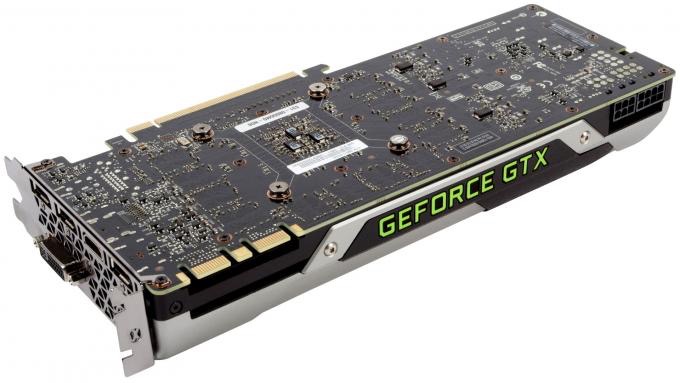NVIDIA CUDA Installation Guide for Mac OS X DU-05348-001v11.0 2 1.2. About This Document This document is intended for readers familiar with the Mac OS X environment and the compilation of C programs from the command line. You do not need previous experience with CUDA or experience with parallel computation. Native macOS profiling is not supported in this release. Remote profiling from a macOS host to other CUDA enabled targets, however, is supported. Supported Mac platforms: Mac OS X 10.13 Steps to install: Double click.dmg file to mount it and access it in finder. Drag nvvp folder and drop it to any location you want (say mac).
- Nvidia Drivers For Mac Os
- Mac Cuda
- Nvidia Cuda Download
- Nvidia Cuda Installation Guide For Mac Os X
- Nvidia Mac Os

Note: Quadro FX for Mac or GeForce for Mac must be installed prior to CUDA 6.5.37 installation. Double-click on CUDADriver-6.5.37-macos.dmg; Click Continue on the CUDA 6.5 Installer Welcome screen; Click Continue after you read the License Agreement and then click Agree; Click Install on. Installation Guide Mac OS X This guide discusses how to install and check for correct operation of the CUDA Development Tools on Mac OS X systems. Installation Guide Linux This guide discusses how to install and check for correct operation of the CUDA Development Tools on GNU/Linux systems. Programming Guides. NVIDIA CUDA 410.130 for macOS release. Version: 410.130: Release Date: 2018.09.19 Operating System: Mac OS Language: English (U.S.) File Size: 16.2 MB Download Now Release Highlights. New Release 410.130. CUDA driver update to support CUDA Toolkit 10.0 and macOS 10.13.6; Recommended CUDA version(s): CUDA 10.0; Supported macOS.
Quadro & GeForce macOS Driver Release 367.15.10.35
| ||||||||||||
NVIDIA® CUDA Toolkit 11.0 no longer supports development or running applications on macOS. While there are no tools which use macOS as a target environment, NVIDIA is making macOS host versions of these tools that you can launch profiling and debugging sessions on supported target platforms.
You may download all these tools here. Note that the Nsight tools provide the ability to download these macOS host versions on their respective product pages.
Please visit each tool's overview page for more information about the tool and its supported target platforms.
The macOS host tools provided are:
- Nsight Systems - a system profiler and timeline trace tool supporting Pascal and newer GPUs
- Nsight Compute - a CUDA kernel profiler supporting Volta and new GPUs
- Visual Profiler - a CUDA kernel and system profiler and timeline trace tool supporting older GPUs (see installation instructions, below)
- cuda-gdb - a GPU and CPU CUDA application debugger (see installation instructions, below)
Nvidia Drivers For Mac Os
Instructions for installing cuda-gdb on the macOS
Mac Cuda
- This tar archive holds the distribution of the CUDA 11.0 cuda-gdb debugger front-end for macOS.
Native macOS debugging is not supported in this release, only remote debugging to other CUDA enabled targets.
- To install:
- Create an installation directory
- INSTALL_DIR=$HOME/cuda-gdb-darwin-11.0
mkdir $INSTALL_DIR
cd $INSTALL_DIR - Download the cuda-gdb-darwin-11.0.tar.gz tar archive into $INSTALL_DIR above
- Unpack the tar archive
- tar fxvz cuda-gdb-darwin-11.0.tar.gz
- Add the bin directory to your path
- PATH=$INSTALL_DIR/bin:$PATH
- Run cuda-gdb --version to confirm you're picking up the correct binaries
- cuda-gdb --version
- Double click .dmg file to mount it and access it in finder.
- Drag nvvp folder and drop it to any location you want (say <nvvp_mac>).
Directory Structure:- |--nvvp
|--bin/
|--lib64/
|--libnvvp/ - Open terminal.
- Change to the bin folder
- > cd <nvvp_mac>/nvvp/bin
- Run nvvp script file in command line
- > ./nvvp
- Remote profiling
- Import nvprof output files
You should see the following output:
- NVIDIA (R) CUDA Debugger
11.0 release
Portions Copyright (C) 2007-2020 NVIDIA Corporation
GNU gdb (GDB) 8.2
Copyright (C) 2018 Free Software Foundation, Inc.
License GPLv3+: GNU GPL version 3 or later
Instructions for installing Visual Profiler on the macOS
- Native macOS profiling is not supported in this release, only remote debugging to other CUDA enabled targets.
Supported Mac platforms: Mac OS X 10.13
- Steps to install:
Nvidia Cuda Download
- Steps to run:
Nvidia Cuda Installation Guide For Mac Os X
- Summary of supported features:
Nvidia Mac Os
- Refer the 'Visual Profiler' section in the 'Profiler User's Guide'
for more information:
- https://docs.nvidia.com/cuda/profiler-users-guide/index.html#visual
